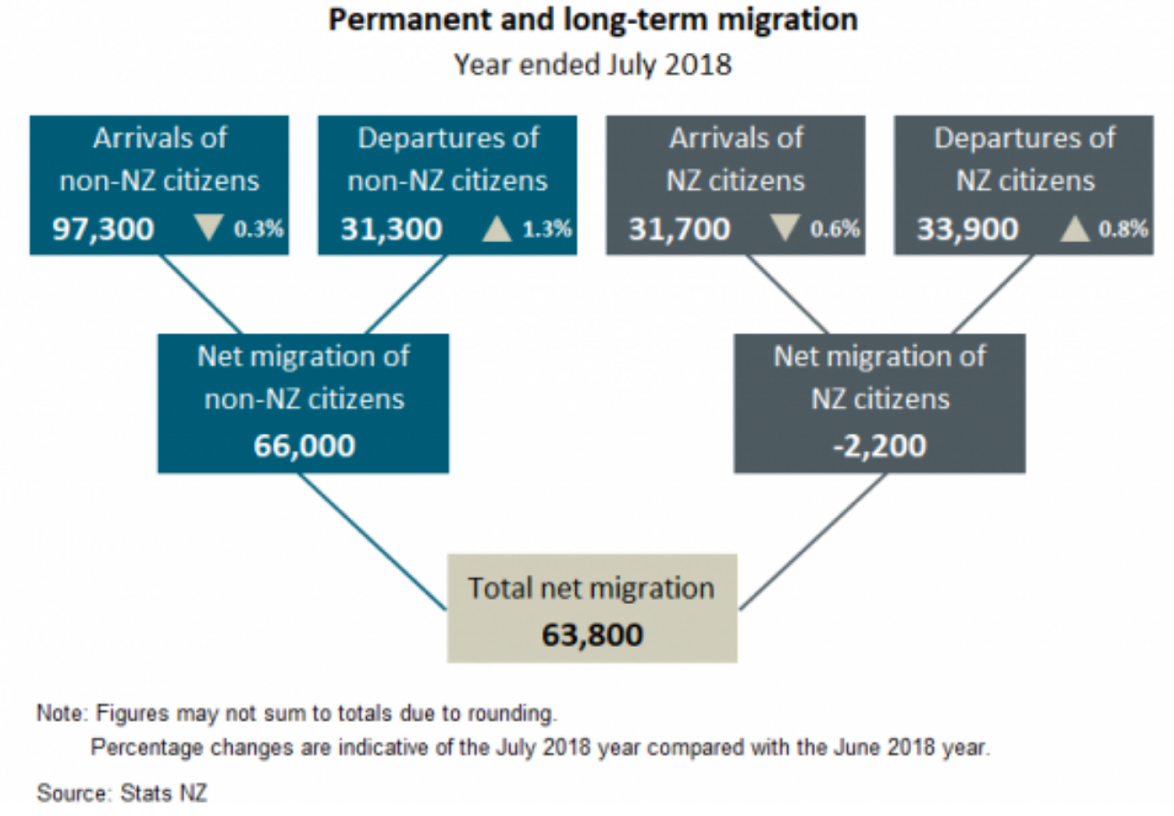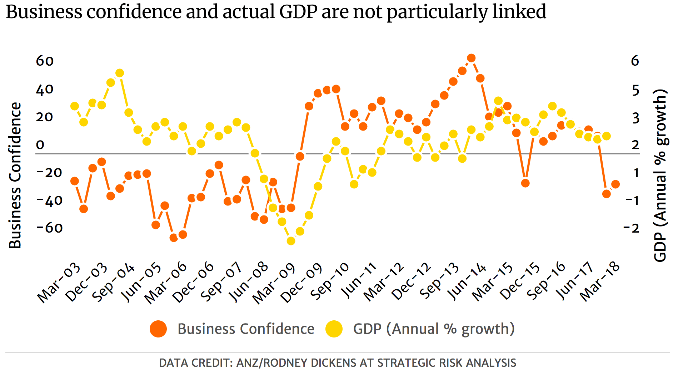Where Is The Trouble Spot!?
Market and Economic Update – Week Ending 31st August 2018

Peter Flannery CFP AFA
“If you have one economist on your team,
it’s likely that you have one more than you’ll need.”
Warren Buffett
Net Migration Remains Strong

Strong immigration levels continue, despite pre-election banter from Winston Peters and the Labour Party.
Smaller countries like New Zealand tend to have larger swings in net migration rates just because of the small population size. New Zealand’s gain from net migration, for the year ended June 2018, is equivalent to 13 people per 1,000 population. This immigration rate is similar to the net migration rates in the early 2000s.
Annual net migration decreased by 8,600 for the year ended July 2018, which is down from the record high of 72,400 a year ago, according to Stats NZ. Therefore, even though annual net migration is a bit lower, it remains strong by historical standards. This helps to support property prices, particularly in the upper North Island and specifically, in various parts of Auckland.
Business confidence in New Zealand hit a 10 year low in July. In a recent ANZ business survey, a net 45% of 340 firms surveyed for July expect general business conditions to deteriorate over the next 12 months. Notably, this is a few points lower than June’s result and the lowest measure since May 2008.

Business confidence and economic activity are not always linked though, as the above chart shows.
ANZ have been conducting this survey for many years, so we have a good sample of data and a week ago, when ANZ released its latest business confidence numbers, they did prove interesting and became a bit of a political football, so to speak. Some of the findings show that a net 20% of businesses surveyed, felt negative or pessimistic about the year ahead. This led to a significant 20% drop in the rating.
Although this was down on the month before, it was not by as much as it had been right after the current government took office. Then, it plummeted to -37.8%. Journalists and politicians, of course, love these types of numbers. For journalists, it is about attention grabbing headlines to sell advertising. For politicians, it is the opportunity to take cheap pot shots at the opposition (or to skite about how well they are doing when the numbers are in the opposite direction).
Anyway, as the chart above shows, business confidence, whilst certainly something to watch, is an indicator rather than a factual reading of economic growth. Also, as I am sure you know, short term data whilst interesting, is less relevant when you take a bigger picture, longer term view.
The emerging markets are a potential trouble spot because many of those economies have used a significant amount of debt to support the day to day running of their economies and in some cases, economic growth. With rising interest rates, this places a further burden on some of these poorly funded economies. The reason for mentioning it is that whilst Greece created some problems, because of the small size of the Greek economy, it was not that difficult to provide the funding. Some of the emerging market economies, however, are much larger than Greece and therefore their problems could flow on to other emerging economies and lending institutions, potentially.
For example, Argentina recently raised interest rates to 60% (that is right, 60%!), to help shore up the peso. Like some other emerging economies, the peso recently dropped sharply, creating internal difficulties because of the significant amount of foreign debt used to run the economy and to fund growth. By raising interest rates, the Argentine Central Bank is hoping to stabilise any further falls in the peso and to stabilise the Argentine economy.
Countries such as Argentina, along with their high levels of debt, also have a high level of imports, which do not help either. Turkey, along with Argentina, remain ‘in the eye of the economic storm’ at the moment. Argentina has gone to the International Monetary Fund (the IMF), to ask for help. Although it is not clear exactly what will take place, further action may be required by the Argentine Central Bank, along with some assistance perhaps from the IMF.
Elsewhere, the US economy appears to be tracking well, with consumer spending up in July. This suggests ongoing economic growth. Bear in mind that around 65% of economic growth and activity is based around consumer spending in the US and therefore increased spending is seen as a good thing for the US economy. Also, the underlying inflation rate hit the US Federal Reserve’s 2% target for the third time this year as well.

